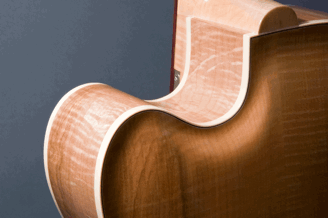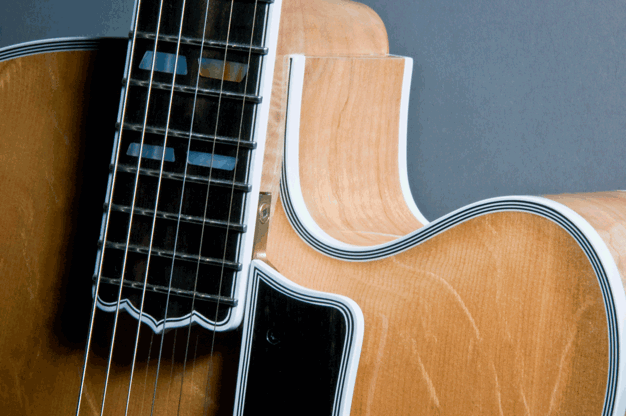One distinctive feature of arch top guitars from McCarthy Stringed Instruments is a cutaway done in the Gibson Premier style (the way the first cutaways were designed). My cutaways are a bit deeper than the typical Gibson Venetian style cutaway, but not so deep as to unduly compromise the surface area of the top and back, or the interior volume. The Premier style keeps the binding straight through the cutaway area with the same dimensions as around the rest of the guitar, while the top and back arching remain symmetrical right up to the widest point of the upper bouts, before dropping all the way down to the rim level at the last possible point. This optimizes the symmetry of the upper part of the top and back allows these areas to vibrate more easily, making a big contribution to the sound of the instrument. It also makes the inner edge of the cutaway as low a profile as possible, where the player's hand will come to rest against it when reaching for the highest notes.
The ’36 Super 400 has arching that is quite different from what many modern luthiers favor. The top and back are relatively flat over a wide central area; most of the drop off from the central area occurs relatively close to the rim. Many modern guitars are arched more like Mount Fuji, with a rather narrow central summit, rather than a broad plateau.
Experience with violin family instruments has taught me that broad arching creates a warmer, darker sound. Narrow arching is brighter. In my opinion, arch top instruments tend to be on the bright side acoustically by nature; making the arching narrow is a step in the wrong direction. I believe the extremely broad arching of the 1936 Super 400 had a lot to do with its deep, warm sound. I have arched my guitars in the same general fashion, albeit a bit more moderately.



